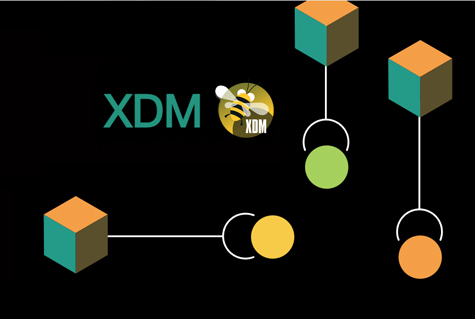Continuous development and deployment are now standard in many areas of software-based business models. This also emphasizes the importance of continuous testing. In an interview with Christoph Stock, Product Development Manager at UBS-Hainer, we asked if the implementation of this process can be achieved without test data automation, considering the required quantity and quality of data?
Christoph Stock: That’s not possible without some kind of compromise. With limited resources, I can’t deploy as often as needed because the development takes longer. Or I might have to deploy something that would require another complex test, and that would negatively impact quality. Or, option three: I need more manpower, which I tend not to have. All three options lead to sub-optimal results.
Question: This corresponds to the three axes in agile project management. How can the problem be solved?

Christoph Stock: Exactly. Basically, this is the magic triangle with the three axes of scope, cost and time of the project. And if I want to keep all three, I need tools, automation and defined processes. These allow me to unleash the creativity necessary for development.
Question: XDM is such a tool for automated test data procurement. How does this contribute to agile project management?
Christoph Stock: After the implementation and configuration of XDM, a high degree of flexibility and dynamics is created from which all other projects will benefit. Configuration involves gathering crucial information, such as the existing database connection, available environments, individual application components, their structure, associated tables, and their interconnectivity etc.
Question: This is kind of a basic setup, and it can be referred to again and again…? Or how would you describe it?
Christoph Stock: That’s right. All this information is now available as raw building blocks. Then we completely rebuild each copy with the tasks – these are our fixed programs – and the workflows, which can be freely formulated by the customer. The whole process is automated.
For example: I can run a copy that starts with a specific business object and XDM dynamically collects the other objects associated with it. Once the basics are defined, it also works the other way around with any other business object. No matter what my starting point is, XDM can collect my test case data from all directions. This is a huge benefit in the daily practice.
Question: Ok, so after the basic implementation comes the great freedom, flexibility and time savings?
Christoph Stock: There is certainly an initial learning or implementation process required to gather all the necessary information. However, once this is done, many possibilities open up.
That is a big advantage, which may not be immediately apparent in the first PoC, as the initial steps must be taken. But as the project progresses, it becomes obvious how much flexibility you have gained through this modular configuration
Question: Is there an example or comparison regarding the time saved?
Christoph Stock: A recent PoC we did concerned the replacement of a comparable tool. Our experience was as follows: The initial setup time for XDM was perceived by the customer to be roughly comparable to the competitor’s tool.
However, the time required to derive variations from this initial configuration, to make changes and to add or optimize further aspects has obviously resulted in massive savings. And the end user – i.e. the developer or tester – also has many more options to get the required test data quickly and easily.
Question: Can that be quantified?
Christoph Stock: With the other tool, the development time for each new variant was almost identical to the initial configuration. With XDM, however, it took only 10-20% of that time because it uses dynamics to create these variations and derivatives.
Test data automation means you don’t need to manually put together the different components of the configurations. As long as you have prepared them accordingly, XDM will correctly combine the modules to match the specific order of the test data. That is how we understand test data automation.
Question: And that can also be demonstrated?
Christoph Stock: Yes, we can provide detailed presentations and connect you with satisfied reference customers who have experience working with XDM.


